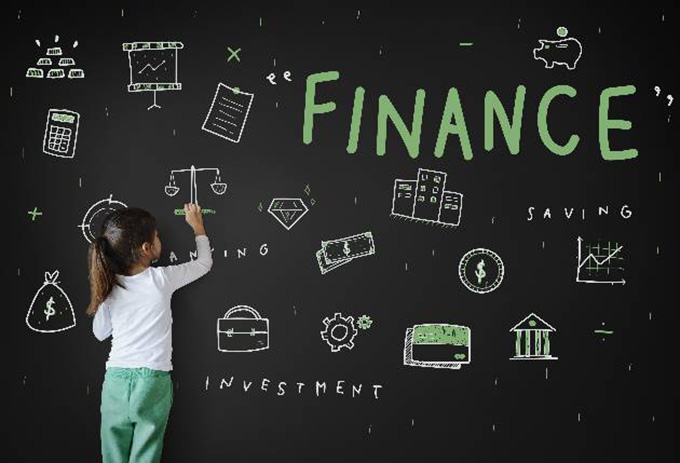
In the age of information and the digital economy, financial education is not just an important skill: it is a real necessity. However, in many schools and homes this fundamental pillar continues to take a backseat.
Let’s imagine a world where children not only know how to add and subtract, but also how to invest, start businesses and grow their savings from an early age… Would that be desirable? Would it help them become adults with more autonomy and freedom?
Teaching children about personal finance not only prepares them to make smart decisions in the future, but opens the door to true financial freedom from childhood.
Finance as a game
Why should learning finance be boring? Children absorb much more when learning is a game. Gamification has revolutionized the way we learn, turning complex concepts into engaging and challenging experiences.
Here are some examples of how financial games can help children enjoy the path to financial freedom:
- Cashflow for Kids – Created by Robert Kiyosaki, the author of Rich Dad, Poor Dad , this gamenot only teaches concepts like income, expenses, and assets; it also instills the idea of escaping the “rat race” through smart investments. Unlike games like Monopoly , Cashflow for Kids addresses real financial strategies and how to achieve financial independence.
- MoneyTime . This interactive platform allows children ages 10-14 to learn how to budget, save, and invest while earning virtual rewards. It all takes place in a 100% digital environment, allowing little ones to build financial habits from their own device.
- Minecraft Education Edition: Building Virtual Economies . What better way to learn than to create your own economy in a virtual world? With Minecraft Education Edition, kids not only play, but also manage resources, create trading systems, and develop financial planning skills, all in a space full of creativity and collaboration.
Innovative applications
Technology has created a perfect digital playing field for teaching financial skills. Educational video games have been identified as powerful tools for developing problem-solving, decision-making, and financial management skills. A recent study highlighted how these games increase children’s financial literacy, while also reinforcing critical thinking.
There are apps specifically designed to teach kids how to manage their money responsibly from an early age, such as Greenlight and PiggyVest .
Greenlight is a debit card for kids that allows parents to monitor and control spending, while kids learn about saving, investing, and budgeting in real time. As for PiggyVest , it allows teens to start investing small amounts and learn about long-term investment returns, creating a solid foundation for understanding the importance of saving and investing.
Passive income and investments, also a piece of cake
One of the pillars of achieving financial freedom is understanding passive income. This concept, although advanced, can be taught in an accessible way from childhood, for example through investments in small family businesses.
Imagine a child who starts out selling lemonade in his neighborhood. As his business grows, he learns to delegate tasks, such as hiring other children to help him, allowing him to make money without always being present. This example teaches the concept of passive income: making money without actively working. Over time, this same principle can be applied to real estate or stock investments.
On the other hand, various current initiatives in Spanish-speaking countries are teaching children to save, invest, and create passive income from an early age. From the programs of [ Mi dinero y yo en Colombia] link text , to the resources offered by CONDUSEF in Mexico (National Commission for the Protection and Defense of Users of Financial Services), children can learn to generate income that works for them… even while they sleep!
Through educational platforms and interactive tools, they begin to visualize how their savings can grow over time, introducing them to concepts such as compound interest and investment markets. The sooner they start, the further they will go.
The entrepreneurial spirit of children
Creativity, innovation and calculated risk-taking are the foundations of the entrepreneurial spirit. In countries like Spain, programs like EmprendeKids are already revolutionizing classrooms by encouraging the development of business projects from childhood. Children not only learn to generate innovative ideas, but they also acquire valuable skills for their future in the world of work or as entrepreneurs.
Some school programs aim to do just that, like Junior Achievement , an organization that has helped millions of kids develop entrepreneurial skills through simulations and activities. These programs teach how to start and run a business, while instilling skills like negotiation, leadership, and financial responsibility.
It’s not about being rich, it’s about being free
True financial freedom isn’t just a dream for the wealthy—it’s an attainable goal for anyone who receives the right education. With the right financial tools and knowledge, kids can begin charting their path to a future where they don’t rely on a traditional job to make a living. Through investments, passive income, and entrepreneurial mindsets, they can achieve financial freedom much sooner than they imagine.
We can leverage technology, games, and innovative strategies to give children the tools they need to build a strong future full of opportunities. Financial education is no longer optional, it is the key to unlocking a world of endless possibilities.
Author Bio: Guillermo Jose Navarro del Toro is a Research Professor at the University of Guadalajara
